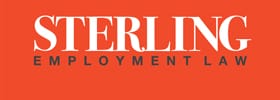Discrimination is a common topic of discussion in the employment law world. Workers, researchers and journalists often discuss workplace discrimination to bring attention to this crucial issue. Many companies offer anti-discrimination training and have zero-tolerance policies.
Despite more conversations about discrimination taking place in recent years, many people do not understand what actually constitutes discrimination. Those who can’t identify misconduct in the workplace can’t seek justice for themselves when they endure mistreatment. Discrimination claims may begin with internal reporting but may soon require the involvement of federal authorities.
For a worker to have a viable discrimination case, the situation needs to meet specific circumstances. What technically constitutes discrimination?
Discrimination involves different treatment
At the most basic level, a discrimination claim involves allegations that an employer treats one person differently than most other workers. Typically, discrimination relates to worse treatment for one person or a specific group of people. Conduct by co-workers, members of the management team or even business clients could lead to claims of workplace discrimination. Someone may endure unfair treatment or workplace harassment. They may not receive the support they need to do their job well, or they may face employer retaliation when they stand up for themselves.
Unlawful discrimination involves protected characteristics
There are some forms of discrimination that are theoretically legal. Employers can choose to discriminate among the candidates for a position based on their work history and educational backgrounds, for example. Those factors are potentially relevant to an employee’s ability to perform a job successfully. Other characteristics should not have any bearing on employment decisions. Federal law protects certain characteristics and specifically prohibits employers from factoring these characteristics into employment decisions.
Protected characteristics include:
- race
- sex
- religion
- nation of origin
- medical condition
- genetic information
- age for workers age 40 or older
Companies that ignore misconduct aimed at workers with these characteristics or treat certain groups of workers differently may have engaged in illegal discrimination.
Those who have reason to believe that their employer treats them in a worse manner than other employees because of a protected characteristic may have grounds for a discrimination lawsuit. Fighting back against workplace discrimination can protect a worker who is experiencing misconduct and help to safeguard others who share the same protected characteristics.

